The closure of the Wylam Colliery in 1868 resulted in the wagon-way having very little use, until the Scotswood to Wylam railway line opened in 1875-76, following much of the wagon-way route. Heddon-on-the-Wall Railway Station was added 5 years later in 1881. The platforms were staggered each side of a level crossing, that to the east, on the north side of the double track, used by trains traveling east towards Newcastle.
This 'Northern' line also included a spur which ran into the yard of the Margaret Pit and Heddon Brick Works. This so-called 'triangular junction' can be seen in the map below, west of Heddon Station. Only the east side of this junction is retained today in a strip of woodland and existing field boundaries. The west side has been ploughed out within an arable field. The road that runs steeply downhill south of Heddon village is named Station Road. It ends at Heddon Haughs Farm on the line of the wagon-way. Large scale maps show that the colliery line ran parallel to the main line, passing directly behind the Newcastle platform.
Heddon-on-the-Wall Railway station, situated near Heddon Haughs Farm, was closed in 1958, and finally demolished in 1959. The current Heddon Haughs farmhouse, south of the wagon-way, incorporates the original Station-Master's house.
The 'Northern' railway line was closed in 1966 and the tracks were removed in 1972. This part of the route was then turned into a public bridleway and cycle track.
None of the old OS maps shows the existence of a track along this route, making it likely to have been in only temporary use. I wondered at first if it had provided a way of disposing of pit waste form Heddon Colliery, perhaps by dumping it in the river.
The 1897 OS map shows its line east of Close House annotated at that time as 'Mineral Railway (disused)'. Its line merges with the Wylam Wagon-way some distance west of the 'triangular junction' making the statement regarding the pit yard unlikely. The prior edition maps (c1865) do not show the mineral line at all and later maps show no evidence that it took the more northerly route described above.
I wondered if the stone from the quarry was actually transported onward by train (at least as far as the Lemington staiths) or could it possibly have been loaded onto boats at a temporary jetty close to the Tide Stone. I had also seen a photo purporting to show a tunnel entrance on the river bank 'at point where the railway ended'. However, I am now unable to find this tunnel entrance, and its exact location and purpose remains uncertain. Old maps don't offer any help. The river bed is often exposed in this area, although tidal, but could even shallow vessels reliably transport stone from this far up-river.
The river was eventually dredged by Joseph Cowen in 1873. A railway track laid across the shallow bed of the river was used to transport iron slag from Spencers Iron Works in Newburn which was used to reinforce the river banks. Before it was deepened, the river could be crossed at several places by ford often where the river bed was stony in places called by the geordie dialect name, 'stanners'. There were several such fords in the vicinity of Newburn and one in particular across the river below Close House leading to Clara Vale, known as Stanner Ford.
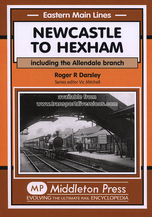
Colleagues from the Local History Society then pointed me to figure 50 in the book:
Newcastle to Hexham: Including the Allendale Branch by Roger R Darsley, Middleton Press (2005).
Between 1898 and 1912, the Tyne Improvement Commissioners (TIC) realigned and strengthened the river banks from Ryton Willows to Newburn Sands. A branch railway was built on the north bank of the river from the NER triangular junction west of Heddon station to Tidal Stone (The tidal limit). Sidings were laid as required on both sides of the river and across the river! Here a set of four side-tipping wagons are hauled to the Ryton side where a locomotive, probably
a Manning Wardle, is waiting on 30th May 1911. (D.G.Charlton collection).
Interestingly, a wooden marker post still stands in this location in the river bed as shown in the right hand of the two photos below. They might however have been positioned all along the bank at one time.
Presumably the track of the 'Hedwin Streams Railway' would have curved round eastwards past the Tide Stone and then taken a gradual descent to the river bed. There may have been a similar junction with the railway line on the south side.

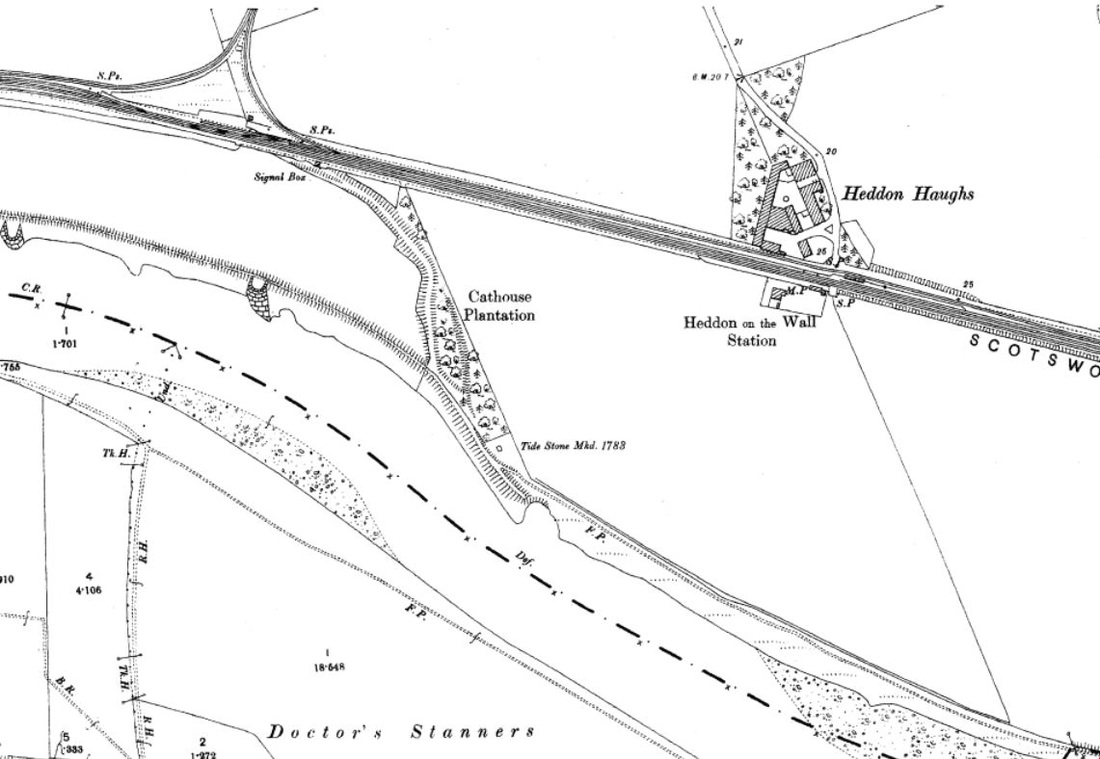
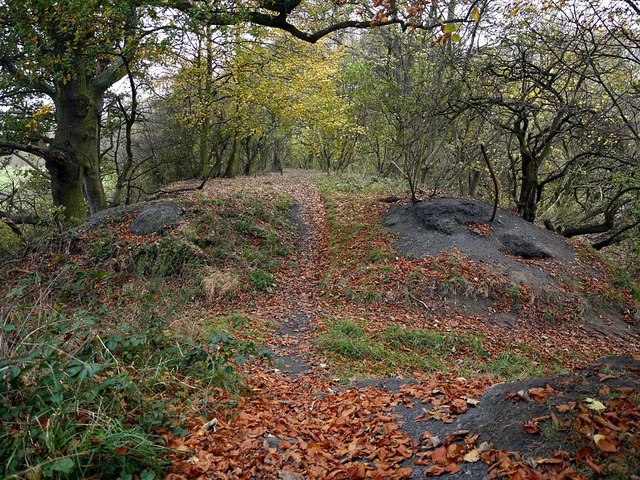
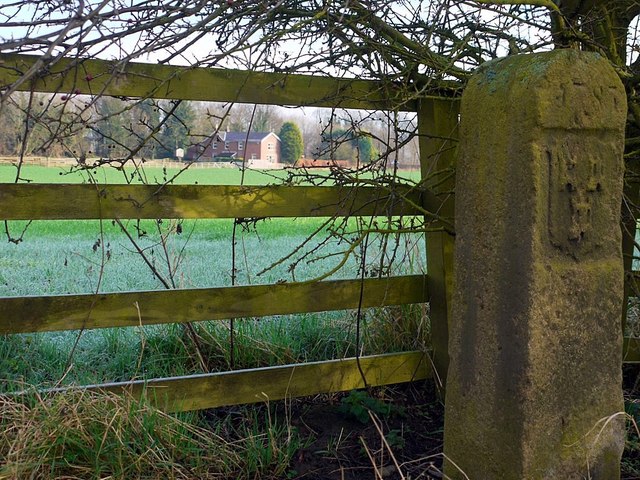
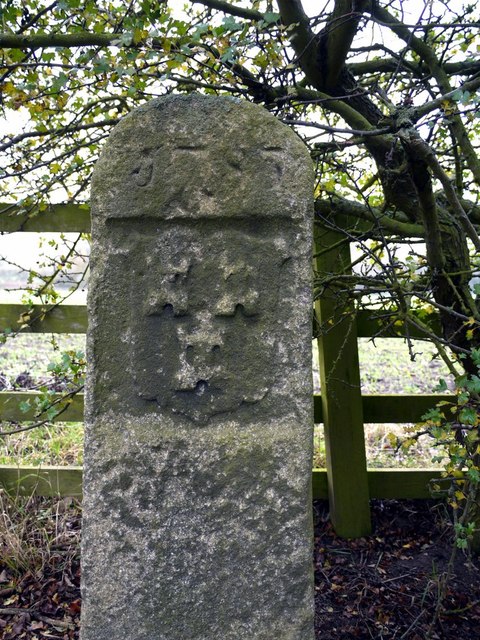
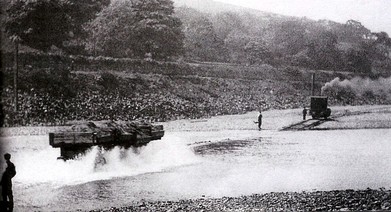
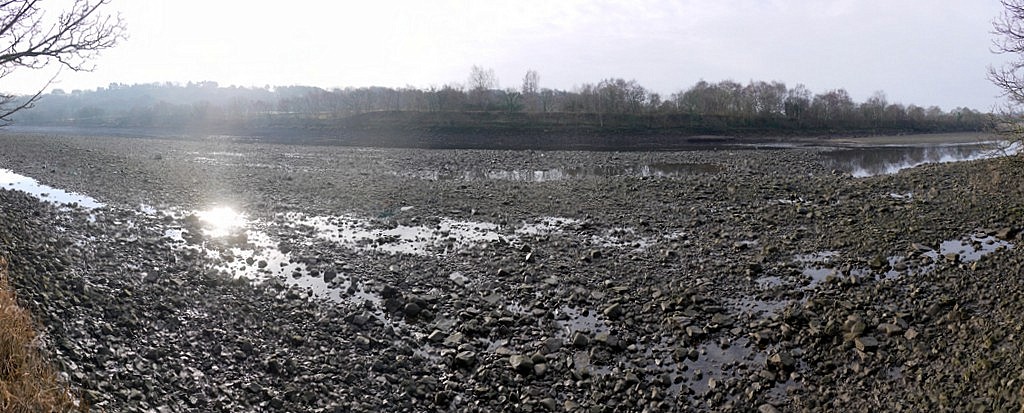

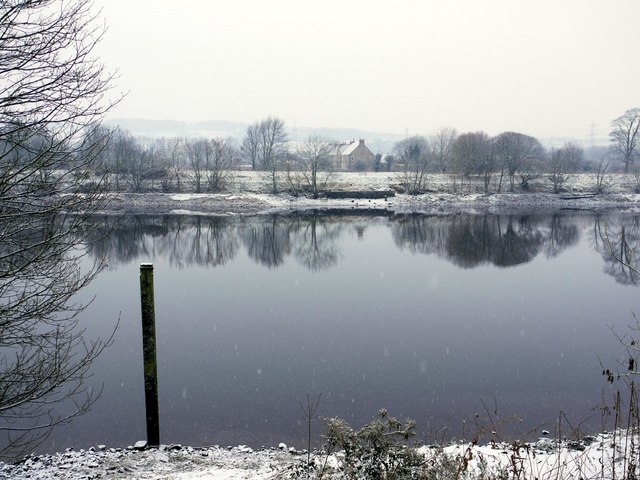
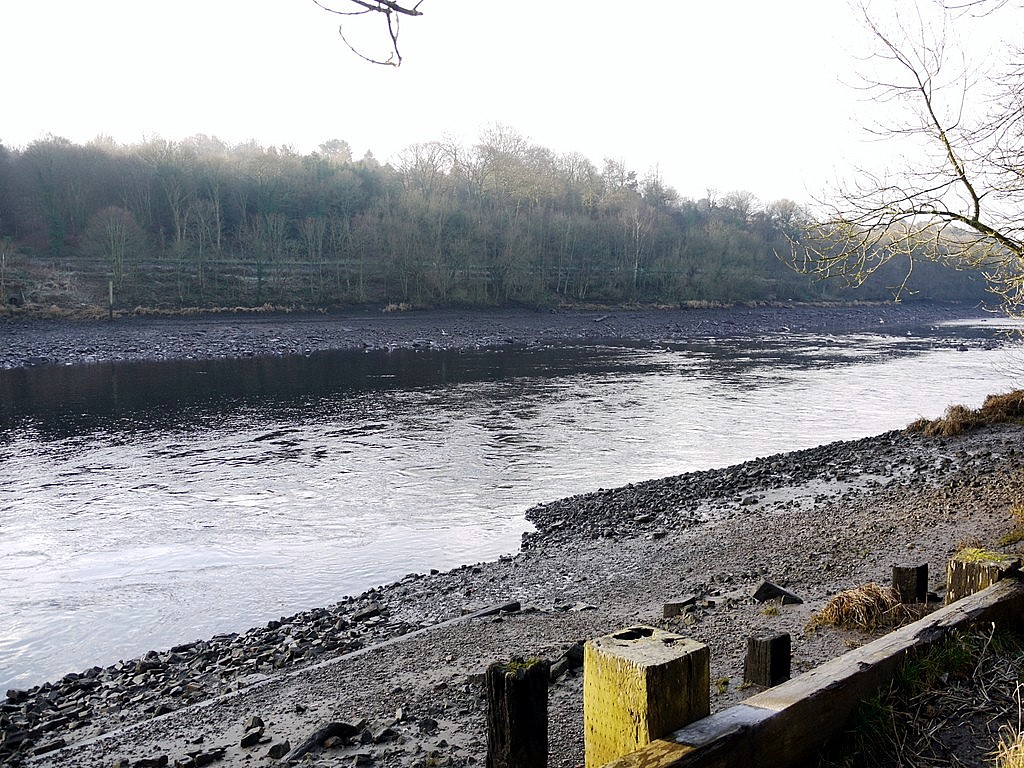
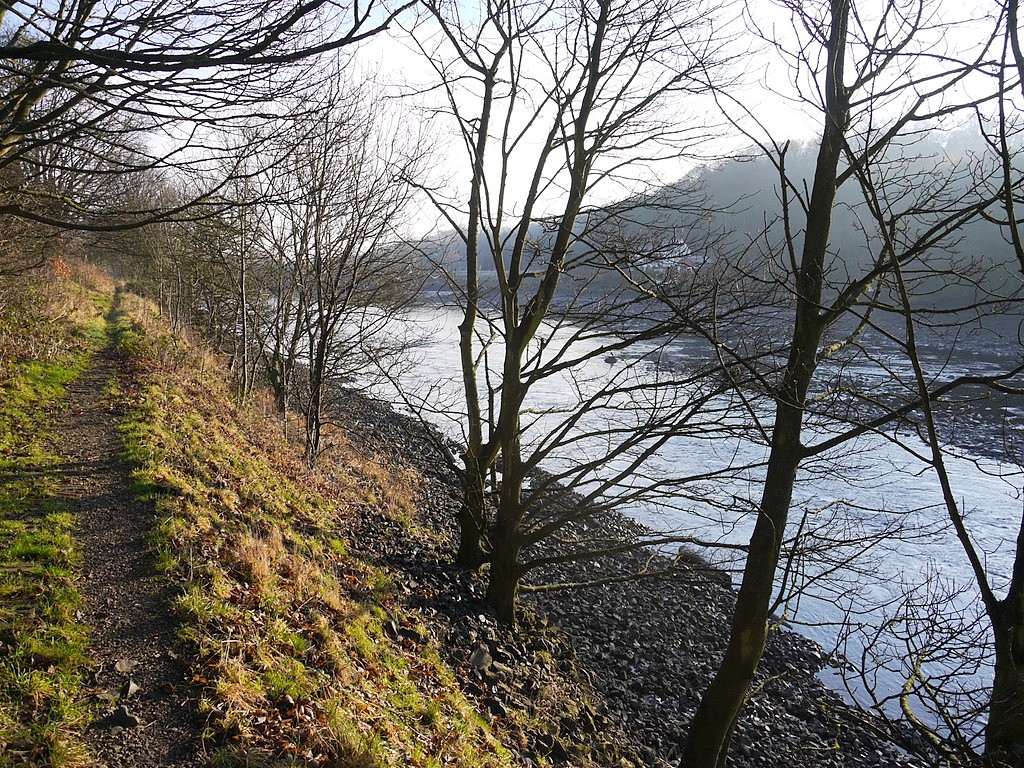
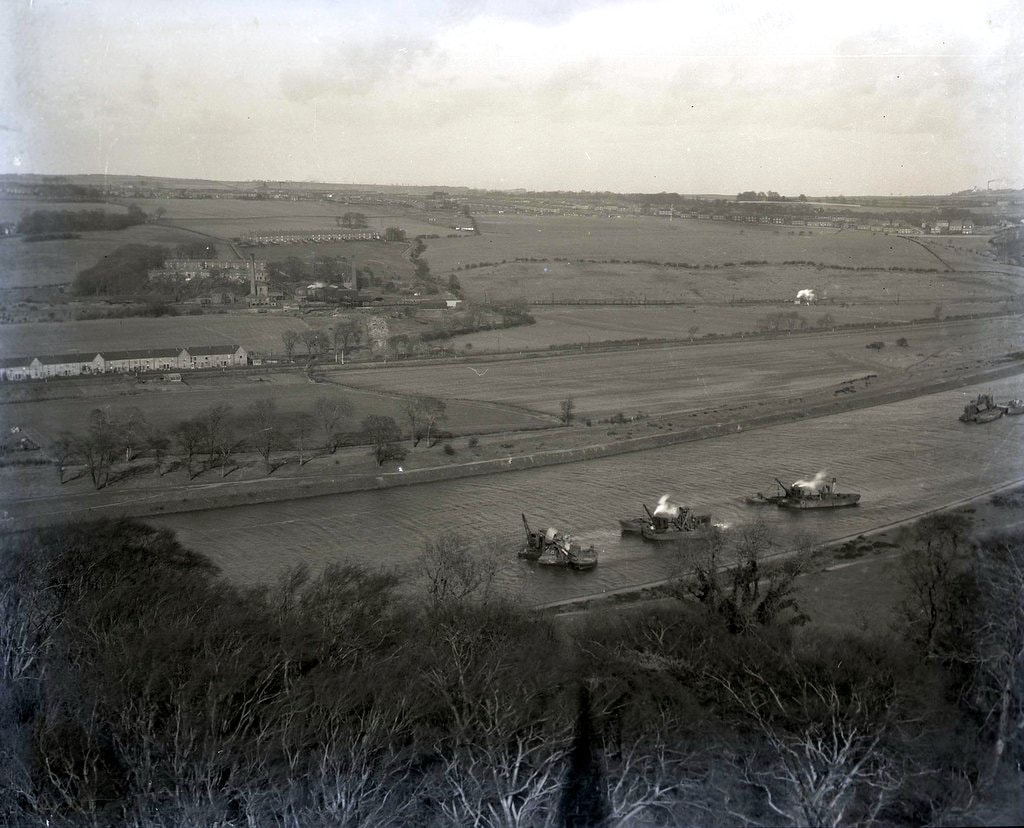
 RSS Feed
RSS Feed
